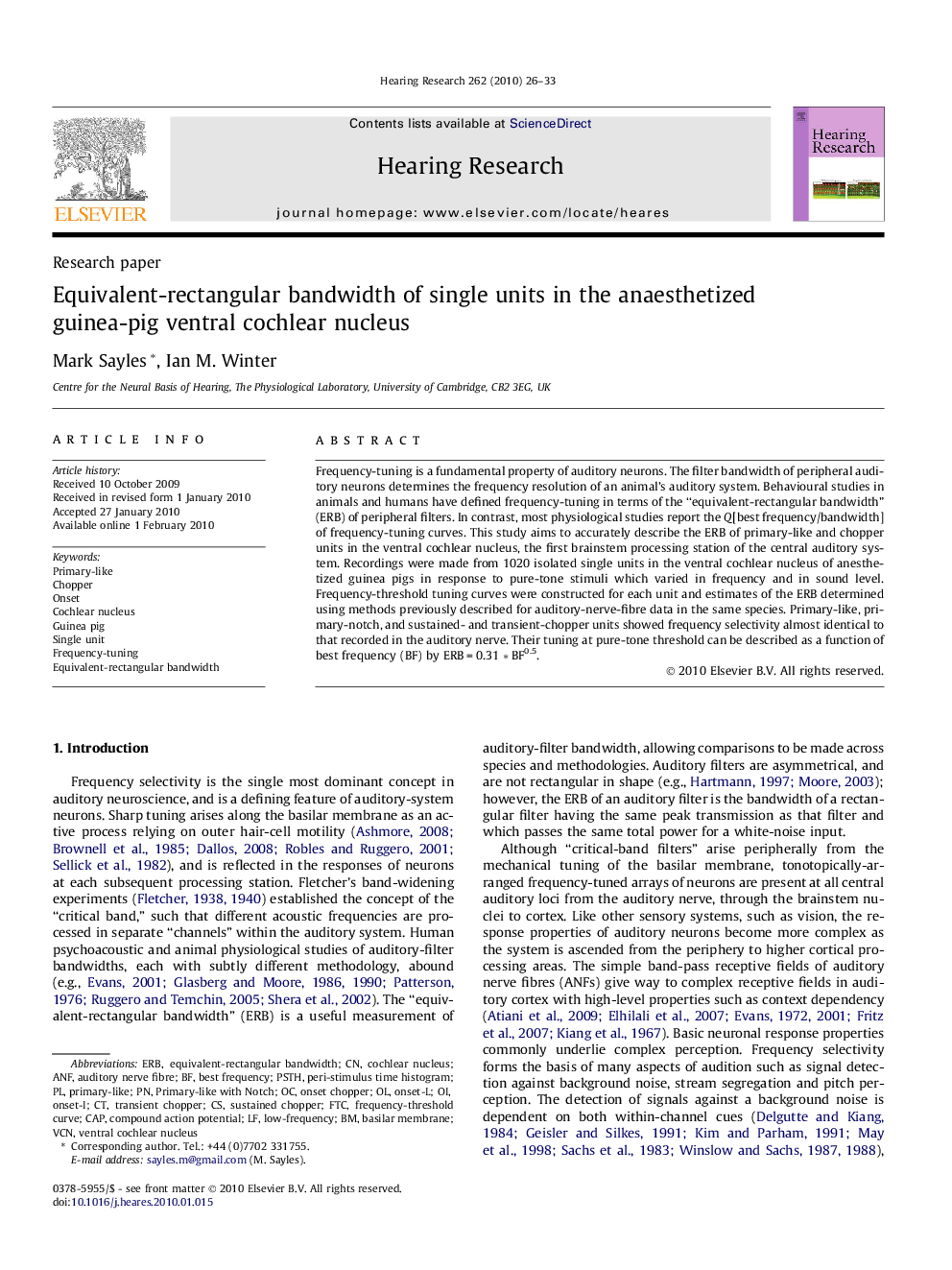| Article ID | Journal | Published Year | Pages | File Type |
|---|---|---|---|---|
| 4355814 | Hearing Research | 2010 | 8 Pages |
Frequency-tuning is a fundamental property of auditory neurons. The filter bandwidth of peripheral auditory neurons determines the frequency resolution of an animal’s auditory system. Behavioural studies in animals and humans have defined frequency-tuning in terms of the “equivalent-rectangular bandwidth” (ERB) of peripheral filters. In contrast, most physiological studies report the Q [best frequency/bandwidth] of frequency-tuning curves. This study aims to accurately describe the ERB of primary-like and chopper units in the ventral cochlear nucleus, the first brainstem processing station of the central auditory system. Recordings were made from 1020 isolated single units in the ventral cochlear nucleus of anesthetized guinea pigs in response to pure-tone stimuli which varied in frequency and in sound level. Frequency-threshold tuning curves were constructed for each unit and estimates of the ERB determined using methods previously described for auditory-nerve-fibre data in the same species. Primary-like, primary-notch, and sustained- and transient-chopper units showed frequency selectivity almost identical to that recorded in the auditory nerve. Their tuning at pure-tone threshold can be described as a function of best frequency (BF) by ERB = 0.31 * BF0.5.
